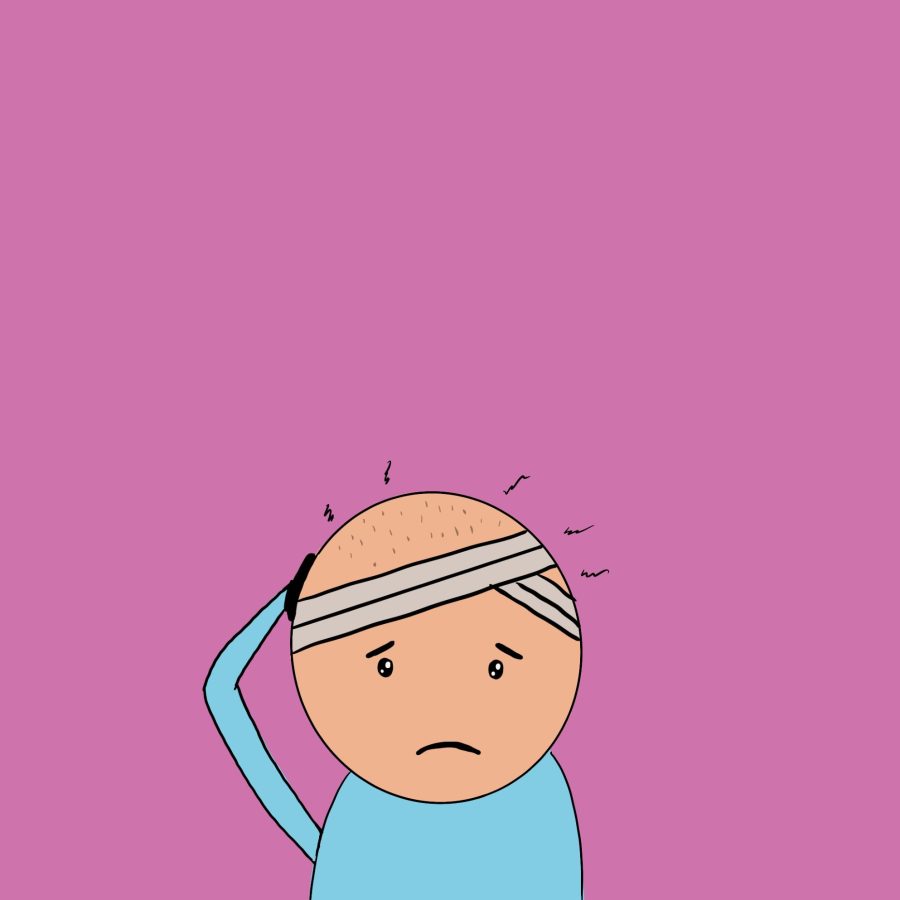Concussions and repercussions
Scary head injuries cause concern at all levels of football
Concussions in athletes are prevalent. In the U.S, about 3.8 million sports-related concussions occur each year. According to the Centers for Disease Control (CDC), 5-10% of athletes will experience concussions in a given athletic season. Unfortunately, many of these injuries go unreported and undiagnosed, leading to mismanagement and premature return to activity. The mishandling of these concussions can lead to prolonged symptoms and long-term consequences.
Though many people are aware of concussions and their seriousness, few are aware of what concussions are. The CDC defines concussions as “A type of traumatic brain injury caused by a bump, blow, or jolt to the head or by a hit to the body that causes the head and brain to move rapidly back and forth.”
“Concussions among athletes do not seem to be noticed as much as they should,” said senior Jack Spalding. “I have seen many [NFL players] take frightening helmet-to-helmet hits and not even leave the game.”
By definition, a concussion may not even occur due to a blow to the head—intense impacts to the body will also cause the brain to rattle in ways it should never. Unfortunately, this subtlety among some concussions is a significant problem with their diagnosis. As a result, many athletes are unaware they have suffered a concussion—leading them to continue playing even though they should receive assistance.
Concussions are a very prevalent topic among media outlets due to the recent gruesome injury suffered by Miami Dolphins quarterback Tua Tagovailoa. After Tagovailoa took a sack from Cincinnati Bengals’ lineman Josh Tupou, Tagovailoa raised his hands parallel to his face mask and stiffened his arms and fingers. This type of reaction to a head injury is known as the “fencing response position,” which is often an immediate sign of intense brain trauma.
“Tua’s injury was incredibly frightening to me,” said senior Leo Izquierdo. “I have never seen someone’s body lock up like that after a hard hit. Fortunately, Tua could recover as quickly as he did.”
Tagovailoa’s fencing response enactment succeeded another incident a few days earlier, where he landed hard on the ground and hit the back of his head hard on the turf. Tagovailoa was evaluated for a concussion but returned to the field. During the time of Tagovailoa’s injury, NFL guidelines did not contain any ruling as to whether or not players were required to sit out for any time following concussions. The NFL has since changed this system in the days following the incident.
The NFL’s original concussion protocol made its initial debut in 2011. This protocol is reviewed by physicians and NFL Players Association advisors yearly to ensure the greatest possible health of each NFL player. Unfortunately, this system failed Tagovailoa, who displayed apparent symptoms of dizziness and confusion in a different game just five days before his concussion against the Bengals. This failure to act has now put the NFL under intense scrutiny.
“There is no scenario in which the NFL has done enough to protect not only Tua but each of their players,” said junior Rocco Giuliani.” For [league officials] to have seen a player repeatedly stumble after taking a hit, and allow them to continue playing, is inexcusable.”
While concussions are an obvious threat to the well-being of athletes, these seemingly mild brain injuries are a predecessor to something far more menacing. Repeated head injuries frequently cause long-term problems such as memory and mental health issues, headaches, physical impairments, and an increased risk for dementia.
According to the CDC, concussions might also cause Chronic Traumatic Encephalopathy (CTE), a brain disease tied to brain changes that cannot be diagnosed before death. Demaryius Thomas, a former NFL player who passed away in 2021 at age 33, reportedly had CTE.
“Long-term brain damage is an issue which should be focused on far more than it currently is,” said senior Patrick Bauer. “More former NFL players pass away each year due to brain-related trauma. It is up to the NFL to do more for former players suffering from brain trauma and to protect their current players from any risk of CTE.”
Though many love football despite its obvious dangers, it is imperative that fans keep in mind that the athletes whom we watch for our personal enjoyment each Sunday are sacrificing a piece of themselves with every hit they endure. Though most players are compensated for their efforts handsomely, money holds little use to a man who has little recollection of anything, including loved ones and close friends. Therefore, it is the sole responsibility of the NFL to do right by its athletes and ensure that brain trauma is adequately researched and combated. The NFL would not exist without the athletes who give up their bodies each week; thus, the least it could do is protect its players to the fullest extent.
Your donation will support the student journalists of Saint Viator High School. Your contribution will allow us to purchase equipment and cover our annual website hosting costs.







